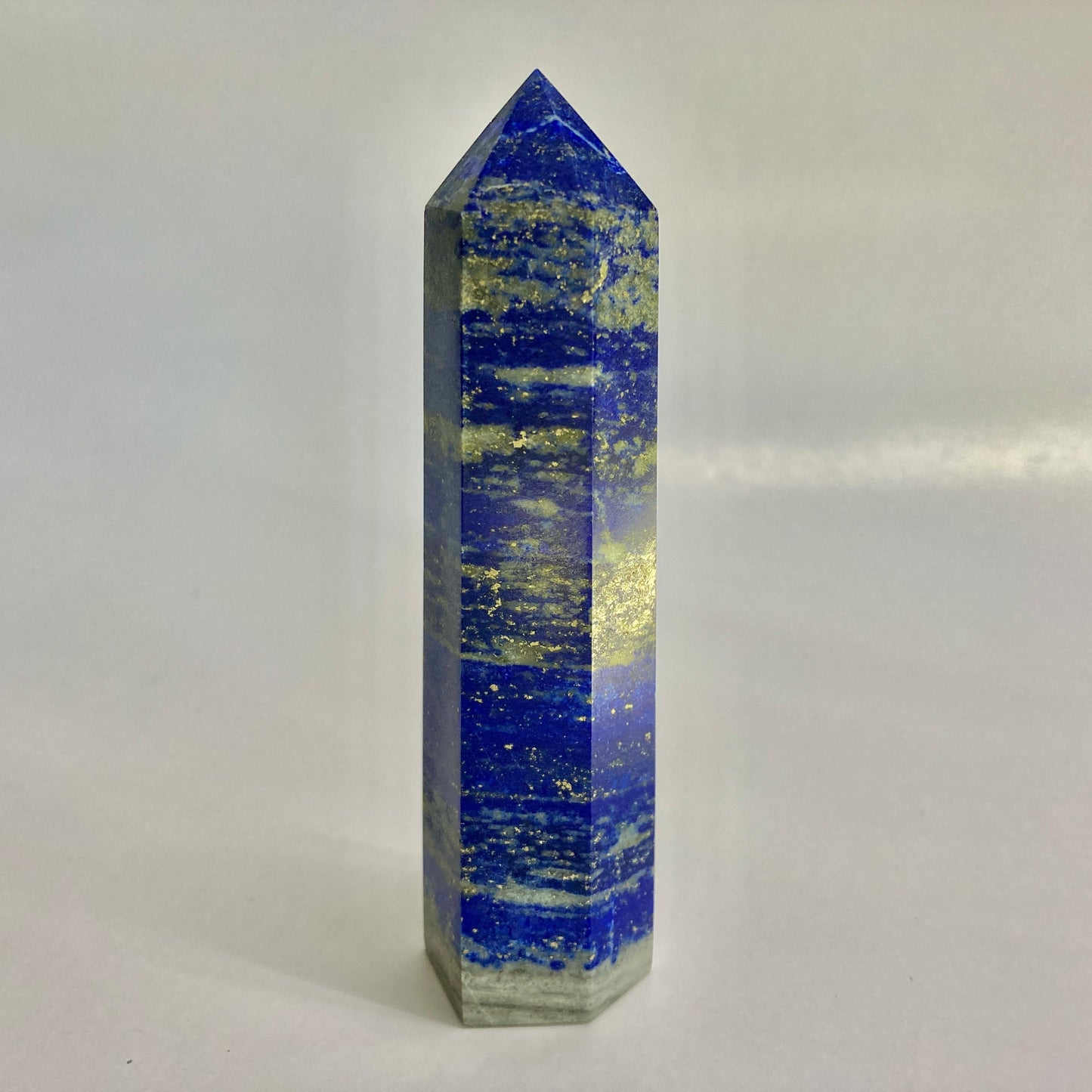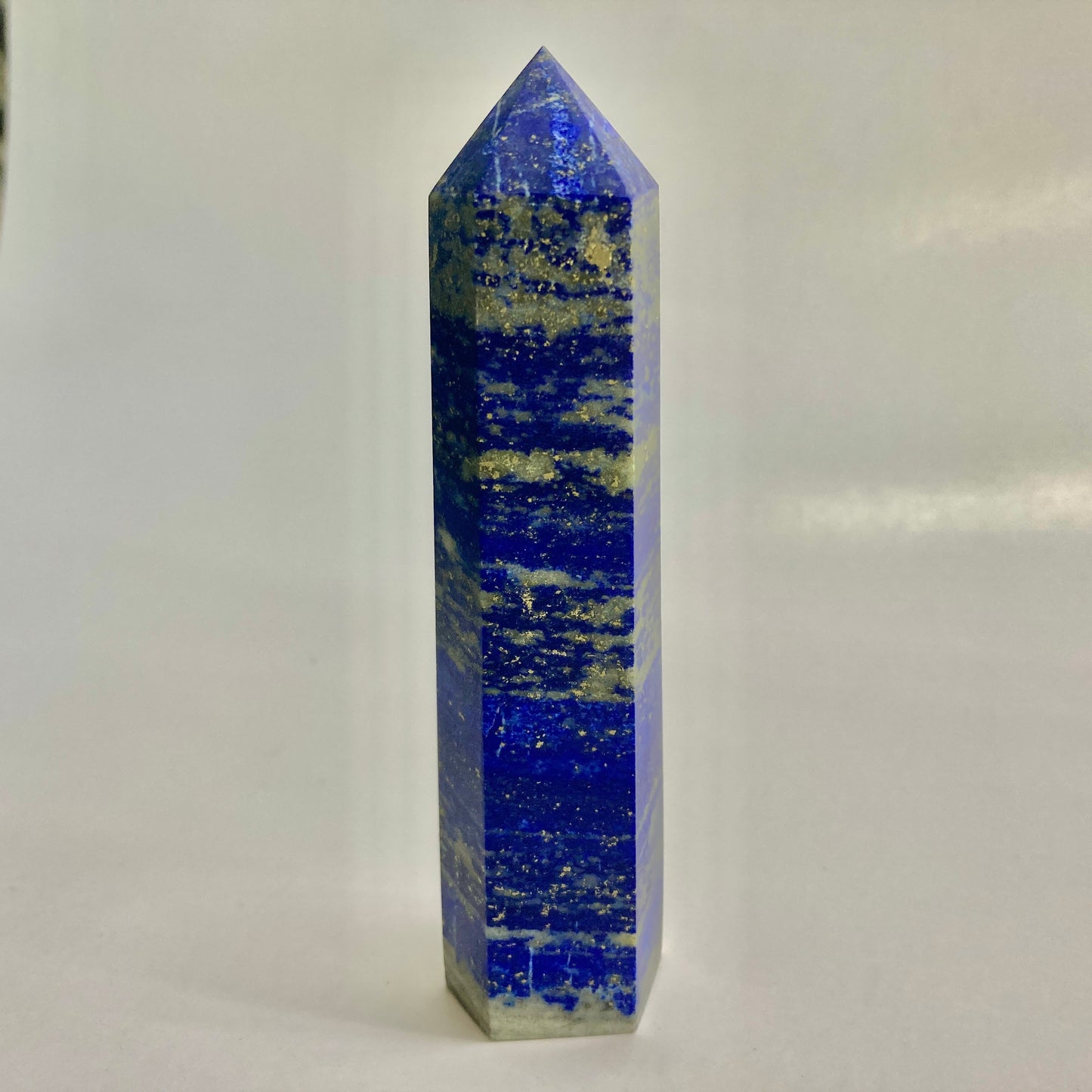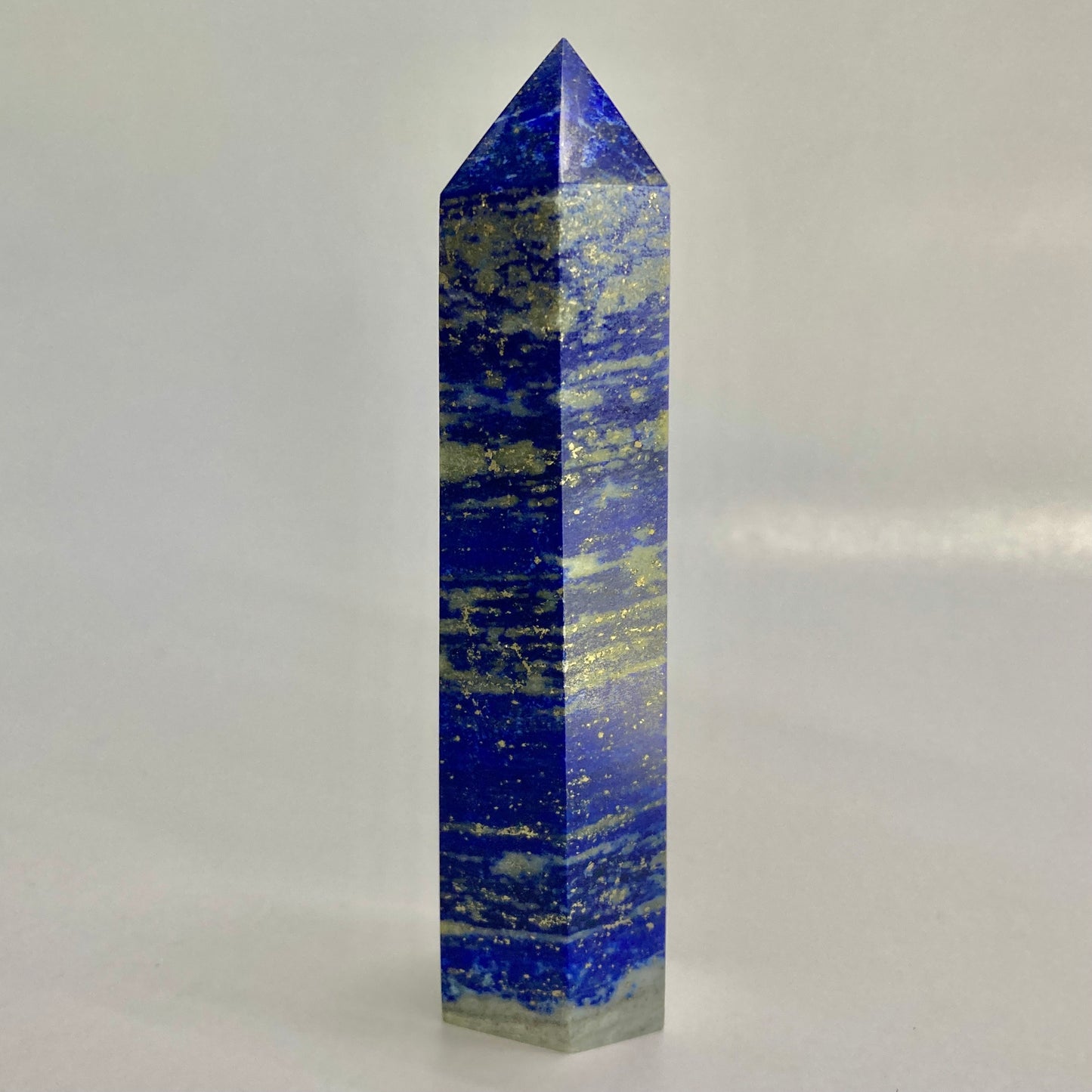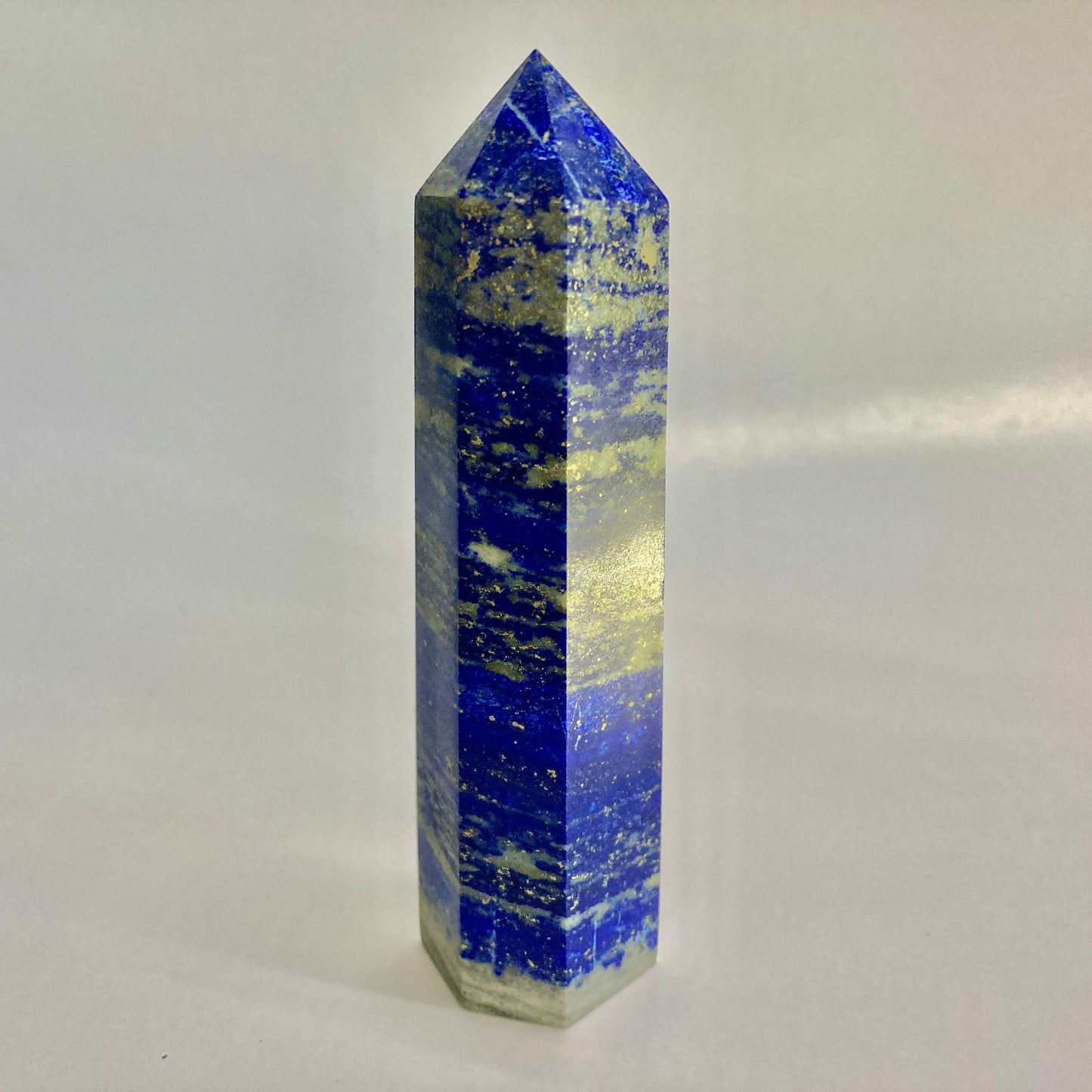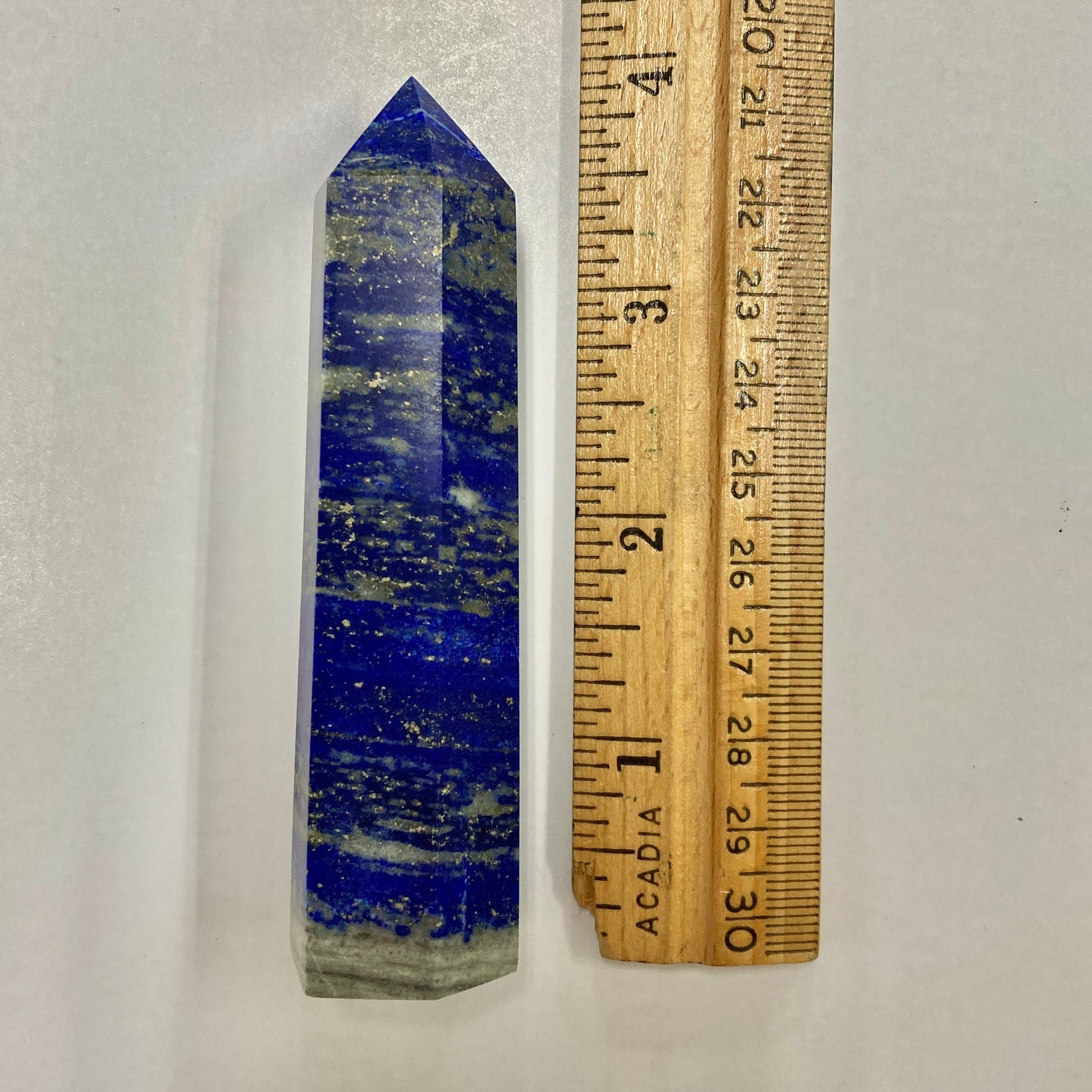Past & Present Science and Nature Store
Lapis Lazuli Tower
Lapis Lazuli Tower
Couldn't load pickup availability
Lapis lazuli forms near igneous intrusions where lazurite replaces parts of altered limestone or marble due to hydrothermal or contact metamorphism. The most important component of lapis is lazurite, but it is actually a mineral made up of many other minerals like calcite, sodalite, or pyrite. The best specimens come from the West Hindu Kush mountains in Afghanistan where it was originally mined over 6,000 years ago.
Ancient Greeks and Romans referred to the stone as sapphirus until the Middle Ages brought the term "lapis lazuli" into play. Since 3100 BC, ancient civilizations like the Egyptians, Chinese and Mesopotamians have prized this rich blue stone. The ancient Egyptians used lapis lazuli in scarab figurines, beads, pendants, and other types of jewelry. They also ground it to use for makeup and for medicine, but it is perhaps most famously known for being included into King Tut's sarcophagus and funeral mask. Renaissance artists in the 15th and 16th centuries ground lapis to make the most expensive and beautiful pigment (ultramarine) and Europeans believed to cure illnesses, especially snakebite.
Lapis lazuli is the birthstone for December and an alternative for September. It is a 7th and 9th anniversary gemstone.
Size: 1 x .94 x 3.75 inches
Weight: 3.7 oz.
Share
